Complementary and Alternative Medicines are becoming mainstream day by day. But what are different types of alternative medicine? There are so many of them that it is difficult to keep up sometimes. This article will shed light on the most important ones.
Contents
In recent years, the medical world has witnessed a significant rise in alternate medicinal paths. It has been observed that about 38% of adults and 12% of children in the U.S. rely on complementary and alternative medicines, also referred to as CAMs, to live a healthy life. So, what are CAMs, and what are their forms? Let’s find out in this article.

What Is Alternative (and Complementary) Medicine?
Generally speaking, Western medical practices don’t standardize complementary and alternative medicines or CAMs. In other words, these therapies and treatments are not a part of mainstream medical care.
Even though these medicines aren’t a part of the mainstream medical world, they have existed for thousands of years. They have helped heal people suffering from severe conditions like cancer, heart diseases, chronic fatigue, and more.
Many people have chosen the integrative medical approach, where they make the best of both conventional and alternative medicines. The most interesting part is that the acceptance for CAMs in the medical community is slowly but surely growing in the U.S.
You might like read: Seniors Guide To Managing Prescriptions And Medications
What Are the Different CAM Systems?
You must be wondering where the CAMs come from? The answer to your question is that it comes from many regions and places.
However, the leading and most famous traditional systems of alternative medicine come from China (TCM), Japan (Kampo medicine), and India (Ayurveda). Some other systems come from Tibet, Central, and South America, Africa, and the Middle East.
As mentioned already, China, Japan, and India are the center points of CAMs, and so, we thought it essential to collect and share information about these in particular. Here it goes
Traditional Chinese Medicine
The complete healing system of China dates back to 200 B.C. The traditional healing system of China was at one time considered so powerful that Korea, Vietnam, and Japan have established their alternative medical system based on the practices that originated in China.
According to the Traditional Chinese Medicine method, the body is made from the energy (qi) of yin and yang – two inseparable yet opposite forces that bring a balance in the body. Yin is the feminine energy – cold, dark, slow, and passive, whereas yang is the masculine qi – hot, light, excited, and active.

TCM lays down that the body is brought to balance by yin and yang energy, and an imbalance in the two leads to an unhealthy body and gives rise to disease or sickness.
The imbalance in yin and yang brings blocks in the flow of energy or qi in and along the pathways known as meridians. This healing method teaches us that one has to unblock the ways for the vital energy to flow, and it will automatically restore balance in the body. Thus, the body will naturally get back to a state of wellness and harmony.
The practitioners of this method use herbs, massages, acupuncture, diets, exercises, and similar techniques to heal their patients.
Kampo
Kampo, also known as Kanpo, is the traditional therapeutic system of Japan, the bulk of which is derived from the Traditional Chinese Method. The classical medicine system of China traveled to Japan in the 5th and 6th centuries.
Since then, the country has successfully created a variety of diagnosis methods, healing herbs, and therapeutic methods to heal patients from life-threatening diseases.
The methods used in the Kampo are distinctively different from other healing approaches, including Ayurveda, Homeopathy, Herbalism, Natural therapy, and more.
Like TCM, this healing method also uses acupuncture, diets, exercise, energy work, and more to help people get rid of common and chronic illnesses, both. Cardiologists, urologists, gynecologists and other health professionals in Japan use this method to help their patients.
Ayurveda
Perhaps the most popular alternative medicine and healing method is the Ayurveda, which means the ‘science of life.’ It is the traditional healing system of India developed by the sages who created yoga and meditation.
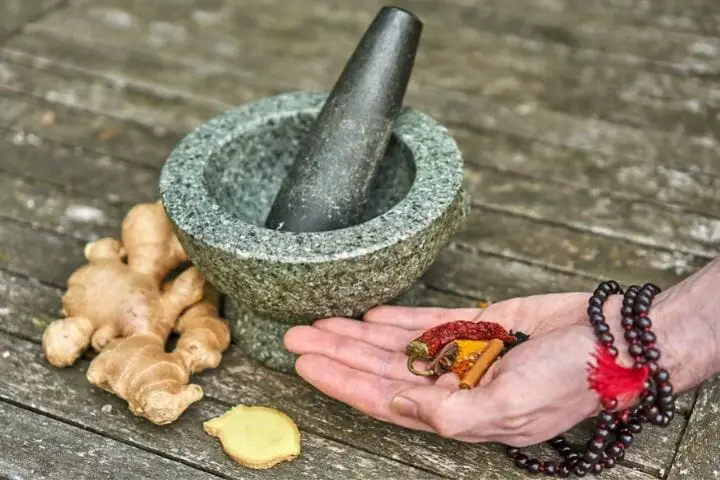
In this system, emphasis is laid down on the mind, body, and spirit, and a balance is brought between them to restore harmony and wellness in the individual’s body.
Some of the most popular Ayurvedic treatment methods include diet, exercise, exposure to sunlight, yoga practice, meditation, herbs, massages, etc. The Ayurvedic healing system goes deeper than this, and it takes years of learning the ancient texts and theories to grasp it.
Other Popular Alternative Medicine Systems
Now that you have learned about the most traditional CAM methods, we thought it would be good to have a decent look at some less popular albeit in-use complementary ways of healing in the U.S.
Naturopathy
Originating in Europe, naturopathy involves a system of healing where the focus remains on self-restoration of the body into wellness and harmony. In this system, it is believed that disease manifested in the body is nothing more than an alteration.
The body is completely capable of healing with medicines and other treatments. This healing method also believes in the healing power of nature, and thus, naturopathy translates as ‘nature’s disease.
Currently, it is practiced across Europe, Australia, the United States, New Zealand, and Canada. It uses herbal medicines, acupuncture, joint manipulation, massages, nutritional supplements, dietary changes, etc., to heal the patients.
Homeopathy
Homeopathy has made a place for itself in the conventional world of drugs, as a complete system of medicines, theory, research, and practice.
Also known as the ‘principles of similarity,’ this medical system was founded by a German physician, Samuel Hahnemann, who followed the concept of repeatedly giving doses of many remedies to healthy people and noticing the symptoms.

Based on those symptoms, the treatment for sick patients was produced in drugs, and it involves a small dosage of drug or substance to trigger healing in the body.
There is a lot of skepticism involved in the healing capacity of homeopathic medicines since the research and trials reckon that the whole theory is based on the placebo effect. However, many clinical trials have mentioned the positive and healing effects of the system when tried on patients.
What Are the Types of CAMs?
There are so many forms of alternative medicines that a person can’t mention them all in a single article. However, we shall discuss those making waves in the western world, such as acupuncture, yoga, herbal medicines, reiki, naturopathy, biofeedback, hypnosis, etc.
Acupuncture
A common practice that is originally a part of the traditional healing methods of China. However, naturopathy and the Japanese medicine system also use this method to heal their patients.
This method involves stimulating particular body parts to promote body health and release any blockages (for the steady flow of vital energy). The stimulation takes place by inserting fine needles in various body parts (known as pressure or acupuncture points) that naturally allow the release of pain-relieving chemicals.
It aims to unlock your energy points and remove the blocks to increase the free flow of energy. It can relieve you from body pains, anxiety, depression, headaches, etc.
Ayurvedic medicines
These medicines are based on ancient Indian texts that have formulas for healing the body with the help of plants and minerals, which allows restoration of balance in the body. Plants and herbs like Ashwagandha, Neem, Brahmi, Shilajit, etc., are a part of this healing method.
Neti, oil pulling, turmeric diet, etc., contribute to making one’s body healthy and happy. Ayurveda also includes body massages and panchakarma in which various therapies are introduced to the body to release all sorts of toxins from it.
Also, let’s not move ahead without mentioning yoga that has become quite a popular workout in America, when it is so much more than that – we shall discuss further.
Acupressure
It is similar to acupuncture but doesn’t involve the use of needles. Instead, it uses hands or elbows to stimulate specific pressure points in the body to release the blockages and increase the steady flow of energy in the body.
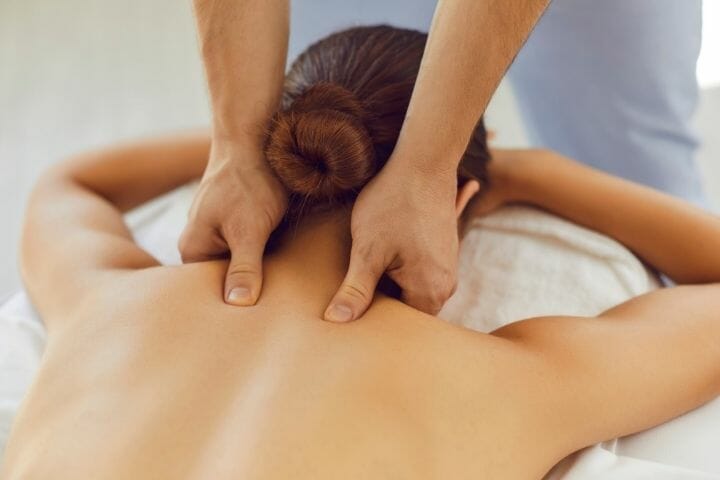
This stems from acupuncture only. According to a 2013 study, it was observed that a group of adolescents who have insomnia (inability to sleep) fell asleep faster and deeper after accepting this healing method. It is known to heal anxiety, depression, intrusive thoughts, headaches, back pain, etc.
Yoga
The traditional practice of yoga in India has come from the learnings of sages and even, Gods. Yes, it is considered a life-changing practice, which involves a holistic transformation of the body by following its eight limbs – discipline, observance, postures, breathing techniques, sense withdrawal, focused concentration, meditative absorption, and bliss or enlightenment.
There are countless medical trials and researches that have proven that yoga has the extraordinary power to heal many diseases, including insomnia, anxiety, depression, high blood pressure, and so much more. The postures are known to release energy blockages from the body and help the flow of the energy or prana (as mentioned in the Ayurvedic texts).
Biofeedback
Even though the researchers are still confused about the working of biofeedback, this technique has helped several people ease their problems and diseases. This technique teaches you to master control over your bodily processes, including heart rate, blood pressure, headaches, chronic pains, etc.
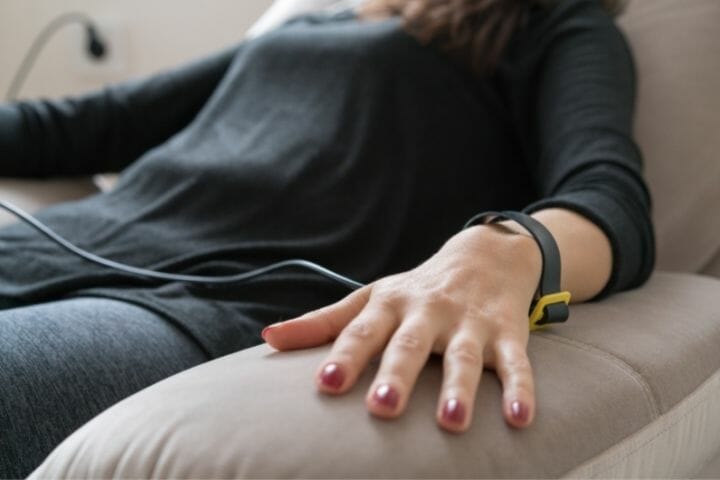
It is a way to become self-aware, know how your body reacts to different situations, and turn all adverse reactions into positive ones. Initially, you will need a therapist for this, but you can successfully control your body processes once you become used to it.
Energy healing
You might have heard about reiki and pranic healing as well as Qigong and electromagnetic therapy before. Well, these are all various manifestations of energy healing. In this method, external energy releases the blockages from the body for the free flow of the qi or vital energy.
The philosophy applied to energy healing is that if a person is sick and stressed, that would mean that the flow is blocked, and if they are happy and healthy, then certainly the flow is high and going.
Thus, the primary purpose of practices like reiki healing and Qigong is to promote relaxation, reduce pain, and improve the well-being of a person. Most of these methods have come from Japan, the hub of energy healing.
Aromatherapy
The practice of aromatherapy takes us 5,000 years back and involves collecting extracts of various roots, leaves, and flowers of ancient trees to promote healing.
The excerpts collected from the plant are used to make essential oils, and these are inhaled via a diffuser or massaged into the skin with the help of carrier oil. This therapy has been known to promote relaxation and a sense of calm in the body, which is half the work done towards healing.
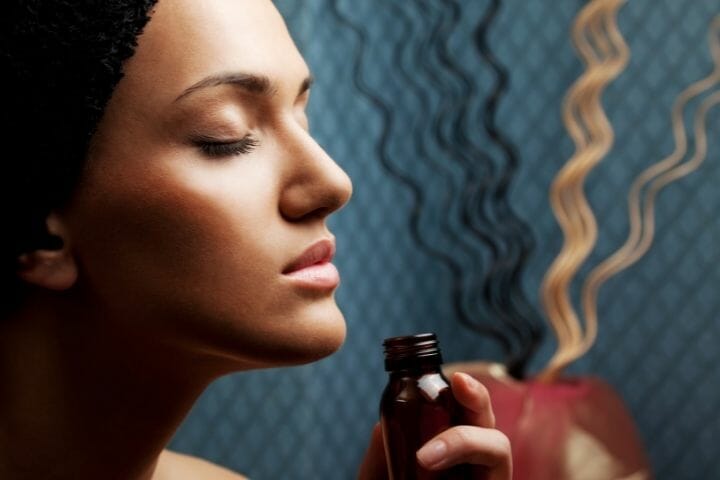
If you do not believe that smelling an essential oil can relieve you, you should learn about this 2013 study done on pregnant women who inhaled linalool and (mint) and linalyl acetate (lavender) and felt calmer within five minutes of smelling the same.
However, you must learn which oil would suit you and how much quantity you should smell since many people are allergic to certain oils.
Meditation
There are various types of meditation that one can begin with because sooner or later, they find the one that suits them the best. It is a part of yoga only, even though many people do not have the idea of the same.
It is a way to become so connected and present that your mindfulness heals everything in your body. Meditation has proven to improve people’s mental health in a significant way as it can change the structure of one’s brain.
Reflexology
This alternative healing method is all about applying pressure on specific points in your ears, hands, and feet to positively affect a person’s overall health. It is believed that there are certain areas in our bodies that are connected to different organs in the body, and pressing them stimulates the nervous system and improves one’s health.
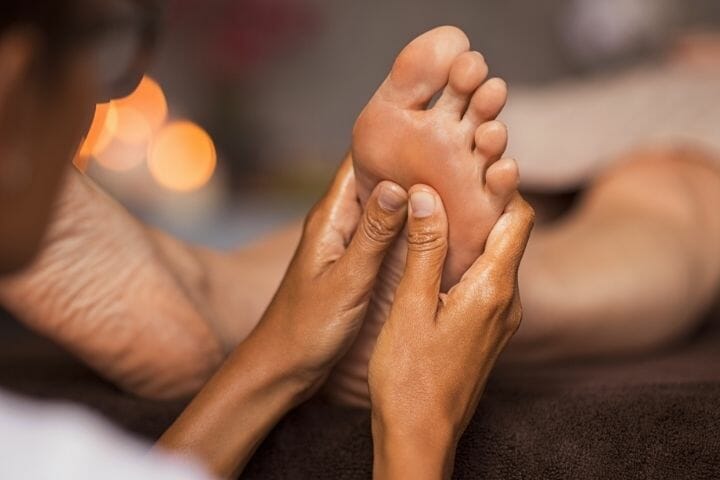
It has proven to relieve people from body aches, anxiety, depression, and other mental health disorders. However, it is recommended to not self-study and try it yourself; instead, take the help of a professional in this case.
Chiropractic medicines and joint manipulation
Even though a chiropractor qualifies as more than an ‘alternative medical professional,’ this practice focuses on treating bodily issues via spinal and joint manipulation. It is an ‘adjustment’ in the musculoskeletal system to make the nervous system feel better.
In a typical session, the chiropractor uses external and controlled force (usually with hands) on joints that have become rigid due to an injury or for sitting on them for long hours.
These adjustments bring the mobility back in the tissues as they loosen the muscles and allow the tissues to heal, thus reducing or ultimately reducing the pain from that area. People who suffer from back pain or shoulder pain usually opt for this therapy.
Hypnosis
This healing method involves a mind-body connection and should initially be done under the guidance and supervision of a professional. Under hypnosis, a person becomes aware and focuses on a certain feeling or emotion that needs healing and continues being there until there is no negative charge left and they feel relaxed.

This has proven miraculous in a few cases of PTSD, anxiety, depression, etc. Many people also use imagery (imagining beautiful pictures, happy memories, to help the body heal.
Hypnosis takes the person deep into themselves to recover the incident(s) that have been heavy on them, and thus, it can be a bit uncomfortable at first. So, it is highly suggested to book a professional for this.
Practicing mindfulness
The simple art of learning to be completely present at the moment is a great and proven way to release all the negative charges of feelings, emotions, and unwanted memories from your system.
You can meditate, journal, create art, or find other ways to keep you mindful of the present moment without being disturbed by the past or future.
What Are the Risks Involved With CAMs?
While many CAMs are proving to be an inexpensive, natural, and effective method of healing, it is also true that the lack of regulation and standards in the practitioners of these CAMs has led to greedy scammers and quacks getting involved in them, which can be potentially very harmful to the patient.
Since many of these therapies are considered natural and therefore harmless by patients, the threat perception of CAMs is very low. People have a feeling that while regular medicines are made from “chemicals” and therefore harmful, these medicines are made from plants and plant sources and are therefore natural and risk-free.

This perception however needs a bit of sobering down. Studies have reported many cases of harm caused by CAMs which were either prescribed by inexperienced practitioners or were just plain dangerous.
A study on the effect of CAMs on children in Australia over three years revealed figures that were quite shocking:
- There were 39 harmful events
- 64% of these events were categorized as either severe or near fatal.
- 77% cases were due to ingestion of CAMs, the rest were because the parents chose not to give conventional medicines. This latter category also included four deaths, unfortunately.
While this is surely a short study, it cannot be denied that it does show that restraint is needed in the practice and use of CAMs, especially the rejection of conventional medicine.
Some common problems associated with the adoption of CAMs:
- The medicine may be ineffective, or worse, harmful
- There might be accompanying dietary advice which is based on questionable evidence and is harmful
- The components used in making the CAM might be harmful, since regulatory standards are lax
- There might be cases where CAMs are not being stored properly (because of a lower threat perception). Improper storage may cause some of the components of the CAM to become dangerous.
CAMs aren’t a part of the mainstream medical world, which automatically puts these medicines in the risk zone since they aren’t standardized. However, our bodies respond differently to different methods of healing.
Thus, with consultation with a professional in the field and learning about your body type, we think it is all right to try new medical techniques because you never know what might work for you.
However, we want to remind you again that your body is your responsibility. Thus, it is essential to talk to a healthcare professional and your intuition before starting a new medicine.
Wrap Up
There are tests, trials, research, and studies that show the high success rate of CAMs, especially in the case of anxiety, body pains, headaches, depression, mental disorders, etc.
Like we have mentioned before, it is essential to know your body before you jump into these new healing methods. Even though most of these are natural and have been tried and tested before, you must act by your body and how it accepts the healing.

We hope that this information about the benefits, and yes the possible harm from CAMs has been useful in helping you develop an opinion about these medicines. Our approach and intention is to be as unbiased as possible, though we would love for our readers to point out if there are inaccuracies in our data and statements.
If you have any further questions, comments or suggestions on this article, you are welcome to address them to us in the comments section. We would respond back as quickly as we can with an answer and if possible try to include the discussion in the article as well.
Lastly, may we request you to share the word on this article to others who are looking for similar information? If you liked what you saw and read, please do not forget to put it up on your social media handles and in your groups so that everyone can benefit from the exchange of knowledge.
